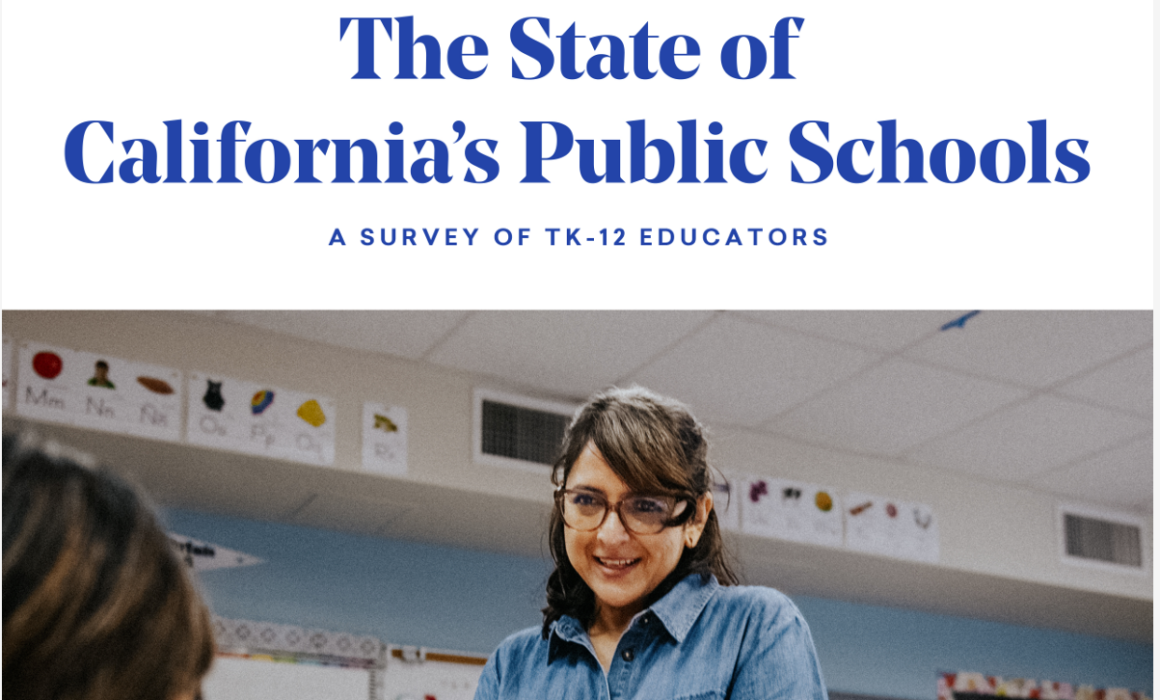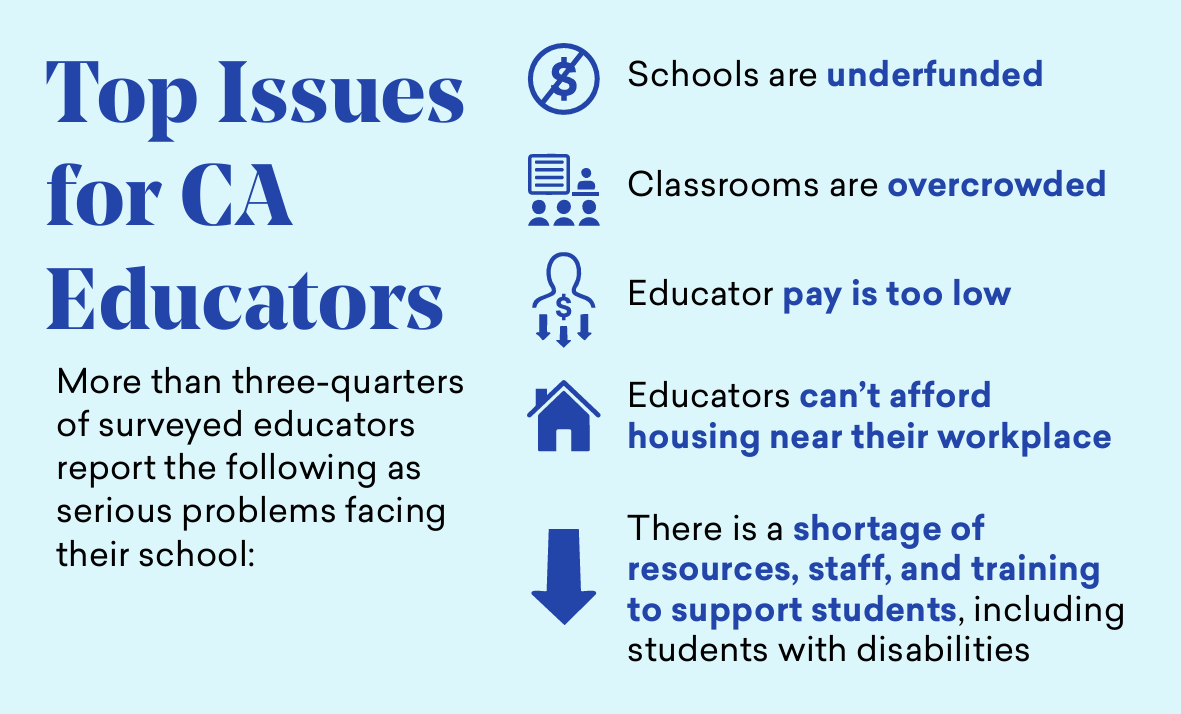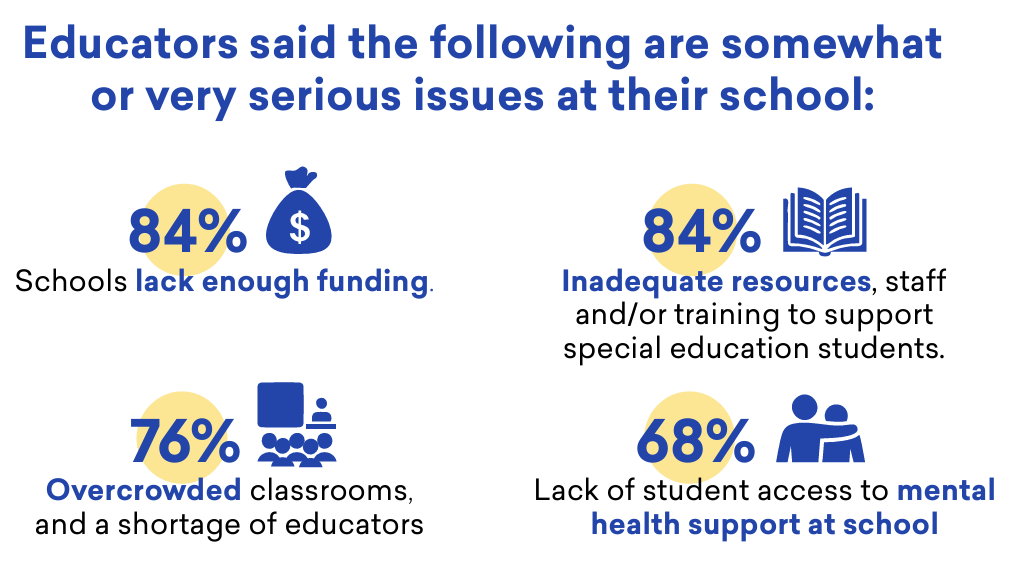
As California continues to endure a statewide educator shortage, low wages and a lack of resources for public schools is compounding the issue – with four in 10 teachers saying they are considering leaving the classroom, according to a new report commissioned by CTA.

Conducted by GBAO Strategies, the State of California’s Public Schools surveyed more than 2,000 TK-12 public school educators across the state this school year, providing new insights about the ongoing shortage and increasing difficulty of recruiting and retaining California teachers. The report shows the impacts of financial pressures for educators, who are crunched by below-market wages and high health care costs:
- 84 percent of teachers surveyed cannot afford to live near the schools where they work.
- 81 percent say their salaries are not keeping up with rising costs for groceries, childcare and other necessary expenses.
- 80 percent have concerns that they would not be able to cover an unexpected cost.
- 69 percent cite high, out-of-pocket costs for often inadequate health care benefits eating into their paychecks.
“Too many educators are spread thin and frankly aren’t able to make ends meet financially, and are working in a public school system that continues to be underfunded year after year,” CTA President David Goldberg said during a news conference held in January.

Sacramento-area transitional kindergarten teacher Kristina Caswell says these exorbitant health care costs in addition to rising housing and daycare expenses have tightened her family budget to the point where she “thinks twice before paying for a prescription.” While she enjoys her job and loves her students and families, Caswell said the financial pressures are difficult to navigate.
“As costs continue to rise, I find myself putting my own health needs aside,” says Caswell, a member of Natomas Teachers Association. “I simply don’t have the extra budget.”

Not only are educators across the state struggling to find housing and pay rent, 91 percent of those who do rent say that they can’t afford to buy a home, according to the report. Carolina Sanchez Garcia, a transitional kindergarten teacher in San Diego and a single parent with five children, had a difficult time finding affordable housing in one of California’ most expensive housing markets. At one point, she commuted daily from across the border in Mexico to be able to house her family.
“My union helped me obtain affordable housing. I was fortunate. I’m very grateful to have a union,” says Sanchez Garcia, a San Diego Education Association member. “Across the state, many teachers are struggling to find a place – any place – for their families to live.”

The report also shows a number of alarming concerns educators have about California public schools:
- 84 percent of educators surveyed said inadequate resources for students provided by the state and school districts were a major concern, while the same number (84 percent) cited a lack of school funding.
- 68 percent specifically mentioned a lack of support for mental health issues. The report notes that California is failing at providing students with access to school counselors, with the state ranking 48th nationally for these crucial supports.
- 76 percent said overcrowded classes and a lack of staffing was a serious issue, with California ranking among the top five states nationwide with the largest average class sizes.
“For more than 46 years, schools have been operating in a deficit in large part due to the passage of Prop. 13 and shifting investment in our schools into profits for corporations,” Goldberg said. “California’s students, schools and communities deserve a more stable and robust funding system to support an equitable education for all. This includes creative revenue-raising solutions that apply the great wealth of this state to our educational system.”
View the full State of California’s Public Schools report here.
The Discussion 0 comments Post a Comment